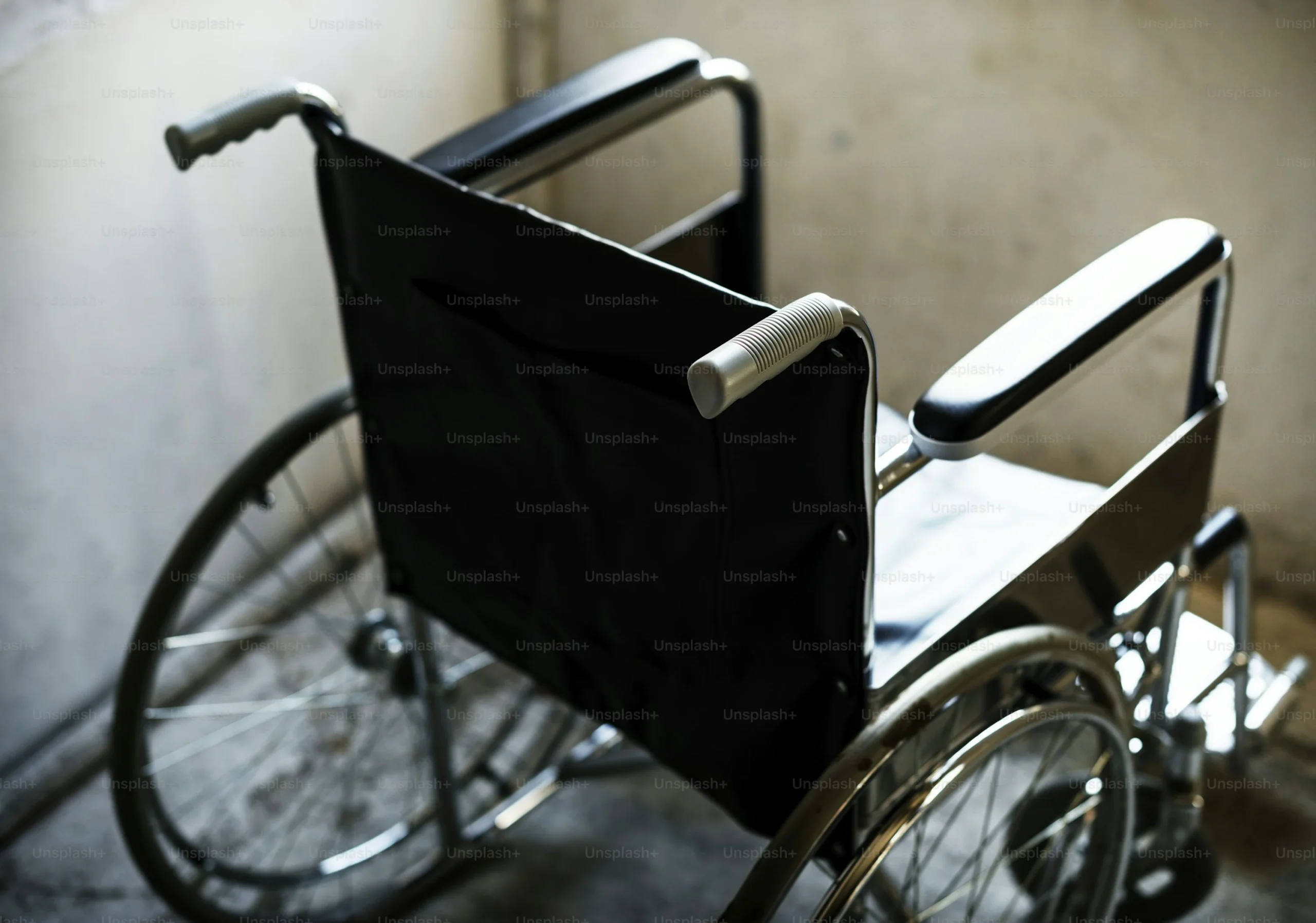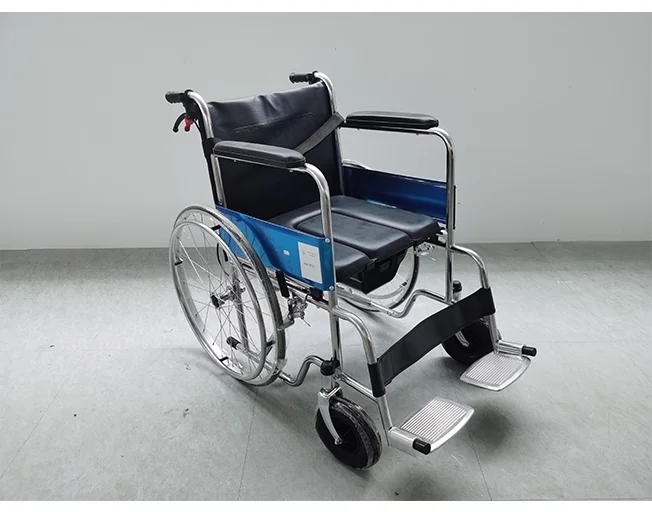Custom Manual Wheelchairs: Key Design Considerations for Optimal Fit
Time : Aug 29, 2025 View : 1,501
A manual wheelchair isn’t just a way to get from A to B. It’s about comfort, freedom, and keeping your body from wearing down. If you spend hours in it, the fit makes all the difference. Even a small detail—like two centimeters in seat width—can change how easy it is to move, or whether your shoulders ache at the end of the day. The right chair matches you, your space, and the way you live.
If you’re hunting for a brand that nails both smart design and user needs, check out XUNYU. They focus on ergonomic builds and work closely with healthcare pros. XUNYU’s got a lineup of customizable wheelchairs with lightweight frames and top-notch seating. These are built for performance, safety, and flexibility. Whether you’re super active or need extra support, XUNYU can tweak their chairs to match your vibe.

Importance of Customization in Manual Wheelchair Design
A custom manual wheelchair does more than get you around. It puts you in charge. By fitting the chair’s size and setup to your body and daily habits, you cut down on strain when pushing. It also makes navigating tight spots a breeze. You end up with more freedom, whether you’re indoors or out and about.
Every user has unique postural and muscular requirements. A standardized design may fail to support spinal alignment or pelvic positioning. Through custom fitting, the chair adapts to your biomechanics rather than forcing your body into unnatural positions—minimizing discomfort over long durations.
Poorly fitted wheelchairs can lead to pressure sores, joint overuse injuries, or even spinal deformities. In order not to make the wheelchair turn over due to weightlessness, please pay attention to the tilt of the body should not be too large, when you are in a wheelchair and want to get something outside the wheelchair. Customization plays a preventative role by distributing pressure evenly and ensuring safe weight distribution.
Frame Configuration and Material Selection
The frame is the foundation of your wheelchair—it influences everything from durability to transportability.
Rigid vs. Folding Frames
Rigid frames offer better energy efficiency as they don’t lose force through moving parts. They’re ideal if you’re highly active or need a fast response from your chair. Folding frames provide easier storage and transport but may sacrifice some propulsion efficiency.
Aluminum, Titanium, and Carbon Fiber Options
Material choice affects overall weight, strength, and ride quality. Aluminum offers a balance between cost and lightness; titanium adds shock absorption; carbon fiber delivers ultra-lightweight performance for elite users.
XUNYU’s Lightweight Frame Solutions
XUNYU’s XY-608J is an example of how advanced materials translate into real-world benefits. Its lightweight frame enhances mobility without compromising structural integrity—making it ideal for both daily use and travel scenarios.

Seating System and Postural Support
Proper seat dimensions prevent pressure injuries while promoting stable posture. A seat that’s too wide may cause leaning; too narrow may create pressure points on hips or thighs. Backrest angles influence breathing capacity and trunk control. Lumbar supports help maintain natural spinal curvature—essential for users with limited core strength. With ergonomics at its core design philosophy, XUNYU’s seating systems integrate adjustable backrests with breathable cushions that adapt over time—ensuring long-term comfort without sacrificing support.
Wheel Positioning and Camber Adjustments
Shifting the rear wheels forward increases responsiveness but reduces stability; moving them back does the opposite. Customizing this balance allows you to fine-tune handling based on activity level or terrain type. Wheels angled outward (camber) improve lateral stability during sharp turns while reducing shoulder strain during propulsion—especially important if you’re navigating uneven terrain regularly. Precision adjustment mechanisms built into models like XY-608J allow fine-tuning camber angles without tools—ensuring peak performance tailored specifically for your biomechanics.
Caster and Rear Wheel Configuration Options
Terrain adaptability starts at ground level—with casters playing a pivotal role in mobility across different surfaces. Larger casters handle rougher surfaces better but may reduce indoor maneuverability; smaller ones excel indoors but struggle outdoors. Fork design also impacts swivel responsiveness under load conditions. Active users often prefer larger wheels (24–26 inches) for better speed control; less mobile individuals might benefit from smaller wheels that offer more stability at lower speeds. Models like XY-608J feature adaptive caster forks that maintain fluid motion across gravel paths or cobblestone streets—without compromising indoor performance.
Braking Systems and Safety Mechanisms
Safety features protect not only against accidents but also enable confident movement on inclines or declines.
Manual Brakes: Lever Positioning and Accessibility
Brake levers should be within easy reach without requiring excessive upper-body movement—which could destabilize posture or cause tipping risks during transfers or emergencies.
Please confirm whether the wheelchair is brakeable and movable or not before the user gets on the wheelchair.
Anti-Tip Devices for Enhanced Security on Slopes
These devices prevent backward tipping when ascending ramps—a must-have if you’re navigating hilly terrain regularly or transferring independently from elevated surfaces.
Please do not change the seat position when you lean back, otherwise the wheelchair will turn over.
Safety Enhancements in XUNYU’s Brake Systems
Their dual-action braking systems ensure immediate locking even under wet conditions—providing peace of mind whether indoors or outside on sloped pavements.
Aesthetic Personalization and Accessory Integration
Beyond function lies identity—and customization allows expression through form as well as utility enhancements tailored to your lifestyle demands. From matte finishes to vibrant colors with logo embroidery options—you can personalize visual appeal without compromising technical excellence. Integrated mounts accommodate trays for eating/workspace use or side bags for carrying essentials—all designed around structural integrity rather than retrofitted add-ons that compromise stability. Whether it’s accessories like oxygen tank holders or custom upholstery patterns—their packages cater holistically to both clinical requirements & personal preferences via modular upgrades available across product lines including XY-608J.
If you have any needs, please feel free to contact XUNYU. XUNYU will provide you with the most comprehensive service!
FAQ
Q: Can I adjust my manual wheelchair myself?
A: All wheelchair adjustment operations should be performed in the case of no one sitting unless there is special instruction. It’s recommended that adjustments be made by trained professionals unless specified otherwise by manufacturers like XUNYU.
Q: What makes XY-608J suitable for active users?
A: The XY-608J features a lightweight frame with precision-aligned wheels designed specifically for efficient propulsion across diverse terrains while maintaining ergonomic seating support throughout extended use periods.
Q: How do I make sure my brakes are working right?
A: Before you use the chair, give the armrests and handles a quick check—make sure nothing’s loose. Pay extra attention to the brake levers. They need to catch properly every single time, especially before you try moving onto a ramp or getting in and out.


